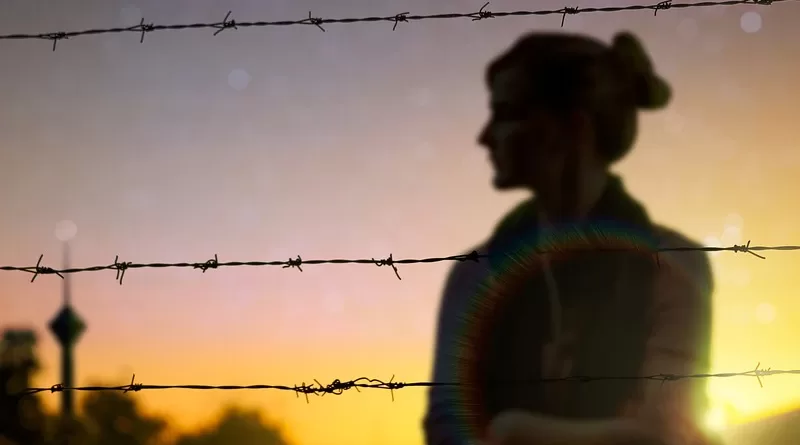Iranian Women Are Leading The Fight For Freedom – OpEd
By Saad Hafiz
Massive protests have rocked Iran over the death in police custody of young Mahsa Amini. The Iranian morality police, Gasht-e-Ershad (Guidance Patrols), picked up Amini for wearing her hijab “incorrectly.” Many Iranian women see the compulsory hijab laws introduced in 1981 as a denial of freedom and choice. The state enforces the laws through intimidation, coercion, and violence.
President Ebrahim Raisi predictably labeled the anti-hijab riots “acts of chaos.” He said that those taking part in the “foreign-supported” protests must be dealt with decisively, as demanded by the “people.” It cleared the way for a brutal crackdown. But the protesters haven’t backed down despite dozens of people killed, including children.
Religious and political authoritarianism have been the hallmarks of the clerical regime since it took power in 1979. And the doctrine of supreme clerical rule Velayat-e Faqih (Guardianship of the Jurist) replaced the repressive Pahlavi monarchy. Its central pillars are a monopoly over the use of religion, weaponizing religion to disarm the political opposition and a pervasive security apparatus.
The Constitutional Revolution of 1905 was a bright light in the blighted political history of Iran. It led to the adoption of a liberal constitution in 1906. It gave women the opportunity to engage in political action. And helped women break the centuries-old bonds of political and social oppression.
The 1906 constitution allowed for a multi-party political system. A striking change from the stranglehold of the absolute monarchy. Unfortunately, reforms didn’t last, ending up with the managed two-party system under the last Shah and the one-party state of the Islamic Republic.
In the present, the mandatory hijab rules symbolize patriarchy and oppression. It is a mechanism that the conservative clergy uses to perpetuate male dominance over women in society. And the resistance to the draconian enforcement of the hijab is part of the political struggle for democracy and freedom in Iran.
Iranian women, like women the world over, are struggling for gender equality and human rights — whether it is reproductive rights, equal pay, or the personal choice to wear a hijab or not. In this respect, widespread international solidarity and sympathy for the Iranian protests are necessary.
But on a cautionary note, the vociferous external calls for regime change in Iran could prove counter-productive. It could delegitimize the genuine political struggle of the Iranian people who face a brutal theocratic dictatorship.
Diverting attention from the protests by discrediting the moderate and nationalist opposition is an effective propaganda ploy of the regime. Charges of acting at the behest of foreign enemies play well in Iran because of the long history of unwelcome foreign intervention.
Significantly, the regime controls university campuses and mass media and conducts regular purges and summary executions of dissenters. Protesters arrested during the current protests are headed for the regimes’ notorious prisons and detention centers. They hold political activists, ethnic minorities, artists, journalists, and labor unionists accused of anti-state activities.
International human rights organizations have frequently accused Iranian authorities of using excessive and lethal force against protesters and abuse and torture in detention. Elections in Iran don’t matter because the Ayatollahs keep control no matter what voters do.
Unlike the US-backed Shah dictatorship with thin urban elitist roots, Iran’s clerical regime has support among the religious and conservative, middle-class, and poor sections of the Iranian population. Hardline-Islamist ideologies and anti-imperialist rhetoric bolster the regime.
Although tough international sanctions and Iran’s isolation as a pariah state have hurt ordinary Iranians, it is too early to predict if indiscriminate state violence during the current protests has reduced long-term political support for the clerical regime.
The state has also proven adept at changing political and religious narratives to stay in power. For instance, the regime plans to reinforce its “strategies to spread the culture of chastity” to counter the loss of support after the recent protests.
The regime contained significant internal revolts in 2009 and 2019, and a similar outcome is likely in 2022. Yet, change in Iran can’t entirely be ruled out if the Ayatollahs continue to kill, maim, imprison, and torture peaceful citizens for demanding their human rights. Unrelenting street protests at a high cost could bring about the end of the clerical regime.
Saad Hafiz is an analyst and commentator. He can be reached at [email protected].


Iranian women, are struggling for gender equality and human rights and protesting against the mandatory law to wear a hijab . To stay in power what distinct street protests in two nations political and religious .In Iran it is to oppose the wearing of Hijab and in parts of South India it is to demand wearing of Hijab in education institutes which is not allowed in the dress code of education institutes since decades.Motive of the clerics is to stay in power and remain in limelight with some agenda.Indian young Muslim women need to learn from the Iranian women and others the world over.